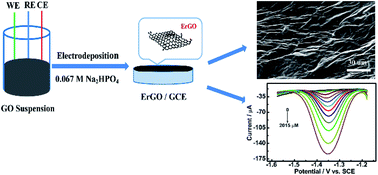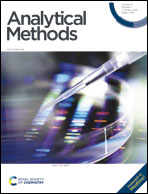A one-step electrochemically reduced graphene oxide based sensor for sensitive voltammetric determination of furfural in milk products
Abstract
Designing of fast, inexpensive and sensitive furfural determination methods for dairy milk is crucial in analytical and food chemistry. In this study, an electrochemical sensor was developed for the cathodic determination of furfural using a one-step electrochemically reduced graphene oxide (ErGO) modified glassy carbon electrode (GCE). The morphology and chemical constituents of the obtained ErGO/GCE were characterized by scanning electron microscopy (SEM), transmission electron microscopy (TEM), X-ray diffraction (XRD), and Raman and X-ray photoelectron spectroscopy (XPS). The results showed that the fast and green electrochemical reduction process effectively eliminated the oxygen-containing groups in GO and produced reduced graphene with a high surface area and improved electron transfer kinetics. In addition, the ErGO based sensor displayed excellent responses for furfural in a Na2HPO4–NaH2PO4 solution (pH = 9.18) with a wide linear range from 2 to 2015 μM and a low detection limit of 0.4 μM (S/N = 3). The reduction mechanism of furfural was also discussed. Furthermore, the feasibility of the sensor was confirmed by the determination of furfural in three milk samples which generated acceptable outputs.

- This article is part of the themed collection: Analytical Methods Recent HOT articles


 Please wait while we load your content...
Please wait while we load your content...